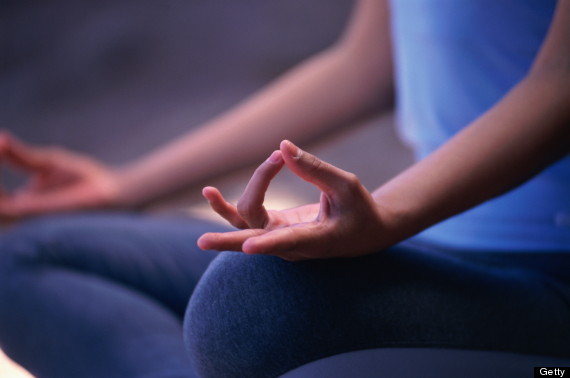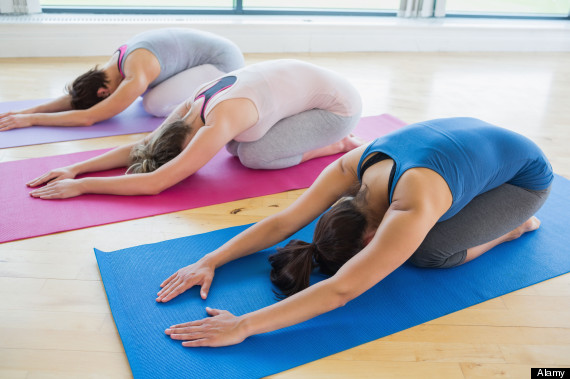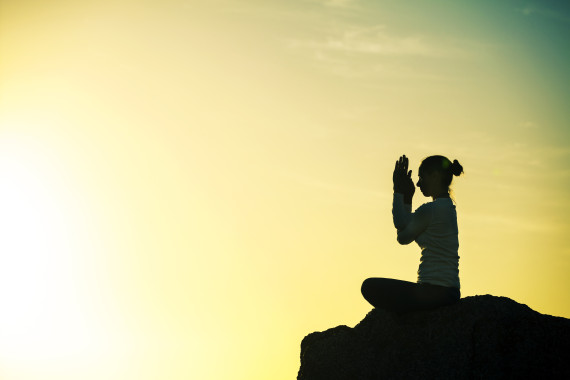
In the past decade, yoga has penetrated pretty much every domain of American life: Yoga classes can be found in airports, public schools, in the White House and the Pentagon, in homes and in the training rooms of pro athletes — not to mention in studios across the country. Corporations have also caught up to the benefits of the ancient spiritual practice, offering classes to employees in an effort to curb rising stress levels and boost productivity. And now investors on Wall Street are practicing downward dog to stay calm during financial crises.
As companies across the US realize that practices like yoga and meditation can have major payoffs, it’s important to note that the benefits go beyond physical fitness and stress reduction. Life lessons learned on the mat can also help us work better and manage our businesses more mindfully. Here are six pieces of yogic wisdom that can help you approach your work life with greater calm, ease and balance.
1. Mental and physical health are intimately connected.

The Dalai Lama recently said that the key to good health is “peace of mind.” Yoga, an integrative practice that aims for emotional health just as much as it does physical health, reminds us that true health and success are the products of mind-body synergy. We achieve our greatest power in yoga by aligning our focus with the present moment and putting our awareness fully on the body. Off the mat, mental health also plays a huge role in physical health: Our bodies internalize stress, leading to a number of negative health effects in both the short and long term, including an increased risk of heart disease and cancer. But conversely, happiness is linked to good physical health: Happier people tend to have stronger immune systems, better sleep quality and increased longevity. Taking care of the body, can keep the mind functioning optimally. When it comes to avoiding burnout and sustaining high performance at work, we can’t ignore either side of the mind-body health equation.
2. Letting go is more powerful than forcing an outcome.

In yoga, we are encouraged to be flexible — to lean into the stretch and breathe into the areas of stiffness or tension, without ever forcing our bodies to go beyond what they are capable of in any given pose. We learn that we’ll be able to go deeper into a stretch by being mentally flexible, breathing and letting go rather than forcing the body past its boundaries. The ability to let go and adapt to change is also an asset at work: Fast Company rates flexibility as the No. 1 characteristic of a great leader. When things don’t go according to plan — as happens so often in work and life — a good leader should be able to bend without breaking, adapting to his or her circumstances by letting go of Plan A and course-correcting to Plan B.
3. Seek progress, not perfection.

The gentle practice of yoga isn’t focused on the end goal of mastering a pose, achieving a perfect figure or even attaining enlightenment. The emphasis is on the process, and the goal is improvement, not perfection. In yoga, work and life, perfectionism can keep us from accepting ourselves as we are — and it can breed a fear of failure that inhibits productivity and creativity.
“I put undue pressure on myself that everything I did needed to be perfect,” digital media professional Julie Jensen wrote in a Huffington Post blog. “The trouble is, the ‘right path’ is what others project for your life. Most of us try to survive within the construct that others have defined. Today, I focus less on ‘right’ and more on ‘my’ path — on the unique impact I am making on the world.” Jensen, a self-described workaholic, says letting go of perfection helped her to have a more purposeful and fulfilling career.
4. Balance requires focus.

Anyone who’s ever attempted an eagle pose, bird of paradise or any other challenging balancing posture knows that if you’re not focused, you’re going to wobble or fall. Balancing poses are particularly helpful for overcoming anxiety because they force us to silence the mind and concentrate on the present moment.
Finding balance in life requires a similar focus on one thing at a time. At the Third Metric conference earlier this month, writer Nell Minow said, “There is no such thing as work-life balance. There are priorities.” So when it comes to making time for the various priorities in our professional and personal lives, we can only make it work by giving each one our focused attention — working when we’re at work and fully enjoying our leisure time when we’re off the clock. Tony Schwartz, CEO of The Energy Project and a Third Metric panelist, described this idea of mindful awareness as approaching life with a “fierce intentionality,” instead of living in a gray zone in between all our obligations. So whatever pose you’re in — editor, mom, wife, sister or yogi — do it with focus and intention.
5. Don’t skip savasana.

Yogis of all levels know that skipping out on the last pose of the practice (the lying-still corpse pose, or savasana) is a common faux pas, and it can undermine all your effort in the class up until then. The final resting pose offers you a chance to absorb the benefits of your practice and clear your mind before you go back out into the world, hopefully to live your life a little more mindfully.
And when it comes to work, it’s much the same: An expanding body of research supports the idea that in order to be successful, we need to end the day with adequate rest. Although a number of business leaders have boasted about their ability to function on four hours of sleep per night (roughly half the amount recommended for adults by the CDC), the science tells us that sleep deprivation takes an enormous toll on our work lives. Our productivity, creativity, cognitive function, stress levels and job satisfaction can suffer as a result of insufficient rest. Getting those seven to eight hours of sleep (and taking that full savasana at the end of class) can make each day at work happier, more productive and more fulfilling — so don’t treat it as optional.
6. Aligning with your purpose will allow you to do things you never thought possible.

Just as the ultimate purpose of yoga is to reconnect you with your inner spark through the harmonizing of mind and body, a meaningful career synchronizes your outer actions with your innermost values. Whether it’s nailing the crow pose or getting the promotion you’ve been vying for, harnessing the power of our passions and intention through mindful awareness can, in the words of Joseph Campbell, “open doors where there were only walls.” The Power of Myth author’s famous words about “following your bliss” hold that aligning with our inner purpose can creates a wealth of unexpected opportunities. Namaste to that.
From: The Huffington Post
